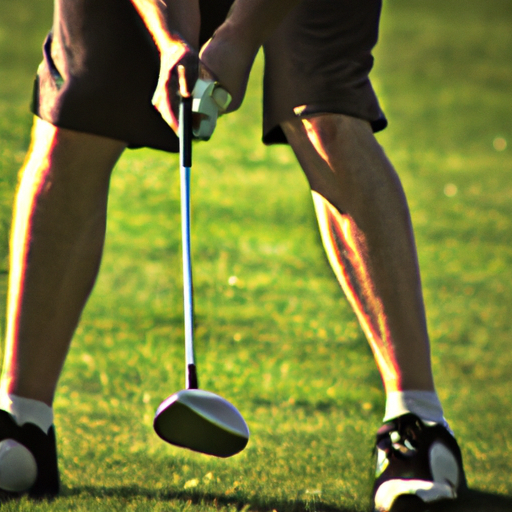
When it comes to mastering the art of a good golf swing, there are key fundamentals that cannot be overlooked. From the perfect grip to the ideal posture, understanding these crucial elements is essential for any golfer looking to improve their game. In this article, we will explore the foundational components of a successful golf swing, offering insights and tips that will help you develop a strong, controlled, and efficient swing. Whether you are a beginner or an experienced golfer, these fundamentals will undoubtedly elevate your performance on the course. So, grab your clubs and get ready to enhance your swing with these essential techniques.
The Grip and Stance
The Importance of Grip
When it comes to a good golf swing, the grip is one of the most important aspects to consider. A proper grip enables you to have control over the club and helps in generating power and accuracy. The grip sets the foundation for your swing, so it’s crucial to get it right.
Types of Grip
There are three main types of grips in golf: the overlapped grip, the interlocked grip, and the ten-finger grip. The choice of grip depends on your personal preference and comfort. The overlapped grip is the most common and is recommended for beginners as it provides stability and control. The interlocked grip is often used by players with smaller hands or those who seek more power. The ten-finger grip, also known as the baseball grip, can offer increased control for golfers with weaker wrists or arthritis.
Proper Stance
Your stance in golf is the foundation of your swing, providing balance and stability throughout. A proper stance ensures your body is positioned correctly for a powerful and consistent swing. Start by aligning your feet with your target, approximately shoulder-width apart. Distribute your weight evenly on both feet and bend your knees slightly. Keep your spine straight and tilt your hips forward. This position allows you to rotate your body effectively during the swing and maintain stability.
Alignment and Posture
Importance of Alignment
Alignment in golf refers to the positioning of your body and club in relation to your target line. Proper alignment is crucial for accurate and consistent shots. When your body and club are aligned correctly, it becomes easier to hit the ball towards the target. Poor alignment can lead to misdirection and inconsistency in your shots.
Correcting Alignment Issues
To ensure proper alignment, start by picking a spot on the ground just in front of the ball as your target. Align your feet, hips, and shoulders parallel to this target line. Check that your clubface is also square to the target. A common alignment mistake is aiming too far left (for right-handed golfers) or right (for left-handed golfers). Take the time to practice aligning yourself correctly to improve your shots.
Proper Posture
Posture plays a significant role in maintaining balance and generating power during your swing. Good posture promotes a smooth and efficient swing motion. Stand tall with a slight bend in your knees. Keep your spine straight and your hips tilted forward. Avoid excessive bending or rounding of your back, as this can restrict your rotation and affect your balance. A proper posture sets the stage for a fluid and powerful swing.
Backswing
Importance of Backswing
The backswing is the crucial first half of the golf swing that sets up the power and control for the downswing. A good backswing allows you to coil your body and load energy that is then transferred into the downswing and ultimately to the ball.
Key Elements of a Good Backswing
During the backswing, focus on a wide and smooth takeaway, maintaining a light grip pressure, and keeping your non-dominant arm straight (for right-handed golfers, the left arm). As you reach the top of your backswing, ensure that your wrists have hinged naturally, allowing for power generation. Maintain a balanced weight transfer and be mindful of maintaining a relaxed and tension-free motion.
Downswing
Importance of Downswing
The downswing is the dynamic part of the golf swing where the energy built up in the backswing is released and transferred into the ball. It is essential to have control and accuracy during the downswing for consistent and powerful shots.
Key Elements of a Good Downswing
During the downswing, focus on initiating the movement from the lower body, specifically the hips and legs. This creates a proper weight shift from the back foot to the front foot, generating power. Maintain a smooth and gradual transition from the backswing, allowing your hands and arms to follow the natural movement initiated by the lower body. Aim for a shallow angle of attack to promote solid contact with the ball and avoid excessive divots.
Impact
The Moment of Truth
Impact is the critical moment when the clubface connects with the ball. The quality of the impact greatly determines the result of your shot. A solid impact leads to a pure and accurate shot, while a poor impact can result in mishits and loss of distance.
Hitting the Ball Squarely
To achieve a square impact, focus on maintaining proper alignment and posture throughout the swing. Keep your eyes on the ball and make sure the clubface is aligned correctly at impact. Aim to strike the ball with a descending blow, compressing it against the ground for optimal distance and control. Practice drills and exercises that help you develop a consistent and square impact for more accurate shots.
Follow Through
Completing the Swing
The follow-through is the continuation of the swing after the impact with the ball. It is crucial to maintain balance, tempo, and rhythm throughout the follow-through to ensure a complete and efficient swing.
Maintaining Balance and Tempo
During the follow-through, focus on maintaining a balanced finish, with your weight transferred to your front foot and your body facing the target. Allow your club to continue its natural motion and swing freely. Avoid abrupt stops or jerky movements. A smooth and controlled follow-through enhances your balance and tempo, leading to better overall swing performance.
Timing and Tempo
Finding the Right Timing
Timing refers to the coordination and synchronization of various elements in the golf swing. It involves the correct sequencing of movements and the ability to generate power efficiently. Developing a sense of timing is crucial for consistent and accurate shots.
Establishing a Smooth Tempo
Tempo in golf refers to the rhythm and pace of your swing. A smooth and consistent tempo allows for a more controlled and repeatable swing. Find a tempo that feels comfortable to you and practice swinging with that rhythm. Avoid rushing or swinging too quickly, as it can lead to poor contact and loss of control. Practice drills and exercises that focus on tempo to improve your swing consistency.
Weight Transfer
Importance of Weight Transfer
Proper weight transfer is essential for generating power and maintaining balance during the golf swing. The transfer of weight from the back foot to the front foot ensures a solid and powerful strike on the ball.
Transferring Weight Correctly
During the swing, focus on initiating the weight transfer by starting the downswing with your lower body. Shift your weight from the back foot to the front foot, allowing your hips and legs to lead the movement. Avoid swaying or sliding laterally, as it can result in poor contact and loss of power. Practice drills that emphasize weight transfer to develop a fluid and powerful swing.
Rotation and Body Movement
Utilizing Proper Rotation
Rotation plays a vital role in generating power and accuracy in the golf swing. The proper rotation of the body allows for maximum clubhead speed and control throughout the swing.
Incorporating Body Movement
During the swing, focus on using your hips, shoulders, and torso to rotate smoothly and effectively. Start the downswing with your lower body, initiating the rotational movement. As you rotate, maintain the proper alignment and posture, allowing your arms and hands to follow the natural motion of the body. Avoid excessive tension or stiffness, as it can restrict your rotation and affect your swing. Practice exercises that promote rotational movement to enhance your swing’s power and consistency.
Practice and Training
Consistent Practice Schedule
To improve your golf swing, consistent practice is essential. Develop a practice schedule that allows you to dedicate regular time to your swing mechanics. Focus on drills and exercises that target specific aspects of your swing that need improvement. Gradually increase the difficulty and intensity of your practice sessions to challenge yourself and develop your skills.
Working with a Golf Instructor
Consider working with a golf instructor who can provide expert guidance and feedback on your swing. An instructor can help identify areas for improvement, provide personalized drills and exercises, and offer technical advice. Working closely with a professional can accelerate your progress and help you develop a more efficient and effective golf swing.
In conclusion, the key fundamentals of a good golf swing involve a proper grip and stance, correct alignment and posture, a solid backswing and downswing, accurate impact, a complete follow-through, well-timed timing and tempo, efficient weight transfer, effective rotation and body movement, consistent practice, and, if needed, guidance from a golf instructor. By focusing on these fundamentals and incorporating them into your swing, you can improve your golf game and enjoy greater success on the course. Happy swinging!





